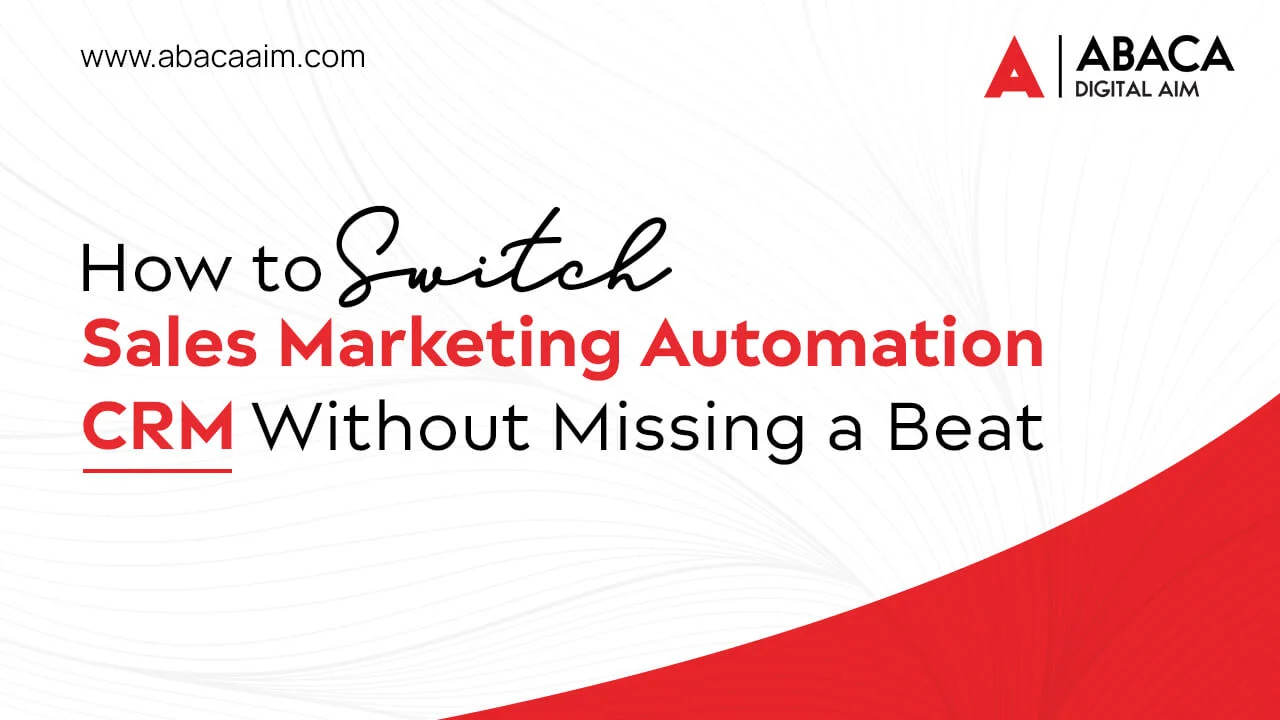
Switching to sales marketing automation CRM can be a daunting task for any business.
With so many different platforms available, it can be challenging to determine which one is the best fit for your company.
However, the benefits of switching can be significant, including increased efficiency and improved customer relationships. To make the transition as smooth as possible, planning carefully and taking a strategic approach are essential.
In this article, we will explore some important steps for sales marketing automation CRM adoption without missing a beat, ensuring that your business can continue to operate seamlessly throughout the process.
Before you can successfully implement a sales automation CRM, you need to have a clear understanding of your sales and marketing processes. This involves identifying the steps involved in your sales funnel, from lead generation and nurturing to closing deals and post-sale follow-up.
To define your sales and marketing processes, start by reviewing your existing sales and marketing strategies. Look at the way your sales team currently interacts with prospects and customers, and identify any areas that could be improved through automation.
Consider consulting with key stakeholders in your organization, including sales representatives, marketing professionals, and customer service teams, to get their input on how automation can help streamline your sales and marketing processes.
Once you have a clear understanding of your existing processes and potential areas for improvement, you can begin to develop a plan for how to incorporate a sales automation CRM into your sales and marketing strategy.
The next step is to choose the right CRM platform. There are many options out there, but you should consider at least four key criteria when selecting your platform:
Considering these four criteria, you can narrow your options and select the CRM platform that best fits your business needs. It’s also essential to consider user interface, ease of use, and customer support when evaluating different CRM platforms. Researching and selecting the right CRM platform can ensure a smooth transition and set your business up for success in the long run.
Once you have chosen the right CRM platform, the next step is to migrate your data to the new system. This can involve exporting data from your old system and importing it into the new one.
Planning this process carefully is essential to ensure that all of your data is migrated correctly and without any data loss or corruption. You should also consider cleaning and standardizing your data before migrating it to ensure that you have high-quality data in your new CRM system.
Once you have migrated your data, it’s time to customize and integrate your new CRM system to fit your business needs. Most CRM systems offer a range of customization options, including custom fields, workflows, and dashboards. You should also consider integrating your new CRM system with other tools and systems that you use, such as marketing automation software or email marketing tools. This can help streamline your sales and marketing processes and provide a more seamless experience for your team.
It’s essential to plan the customization and integration process carefully to ensure that you are taking advantage of all of the features and functionality the new CRM system offers. You should also seek help from the CRM vendor or a third-party consultant if you need assistance with customization or integration. By taking the time to customize and integrate your new CRM system, you can ensure that it meets your business needs and provides maximum value to your team.
Once your new CRM system is customized and integrated, it’s crucial to provide comprehensive training to your sales team. This can include online training, webinars, or in-person training sessions. The goal is to ensure everyone on your sales team knows how to use the new system effectively and efficiently.
With your team trained and your new marketing automation CRM platform in place, it’s time to execute your sales processes using the new system. Monitor the system closely during the initial phase to ensure everything works as expected. You may need to adjust to optimize your processes and take full advantage of the new system’s capabilities.
Finally, tracking your results is essential to measure the effectiveness of your new CRM system. You can use the data and analytics provided by your CRM system to monitor your sales processes and identify areas for improvement. You should also track key performance indicators (KPIs) such as sales pipeline, conversion rates, and revenue generated to measure the new system’s impact on your business.
In conclusion, adapting to a new sales automation CRM can be challenging. Still, with careful planning, execution, and monitoring, you can ensure a smooth transition that benefits your business in the long run. By following these seven steps, you can set your team up for success and drive growth and profitability for your business.
AIM is a results-driven marketing automation tool in Chandigarh that empowers you to reach out to your customers, prospects and partners. With this sales marketing automation CRM, businesses can automate repetitive tasks, nurture leads, and create targeted campaigns, improving customer engagement and higher conversion rates.